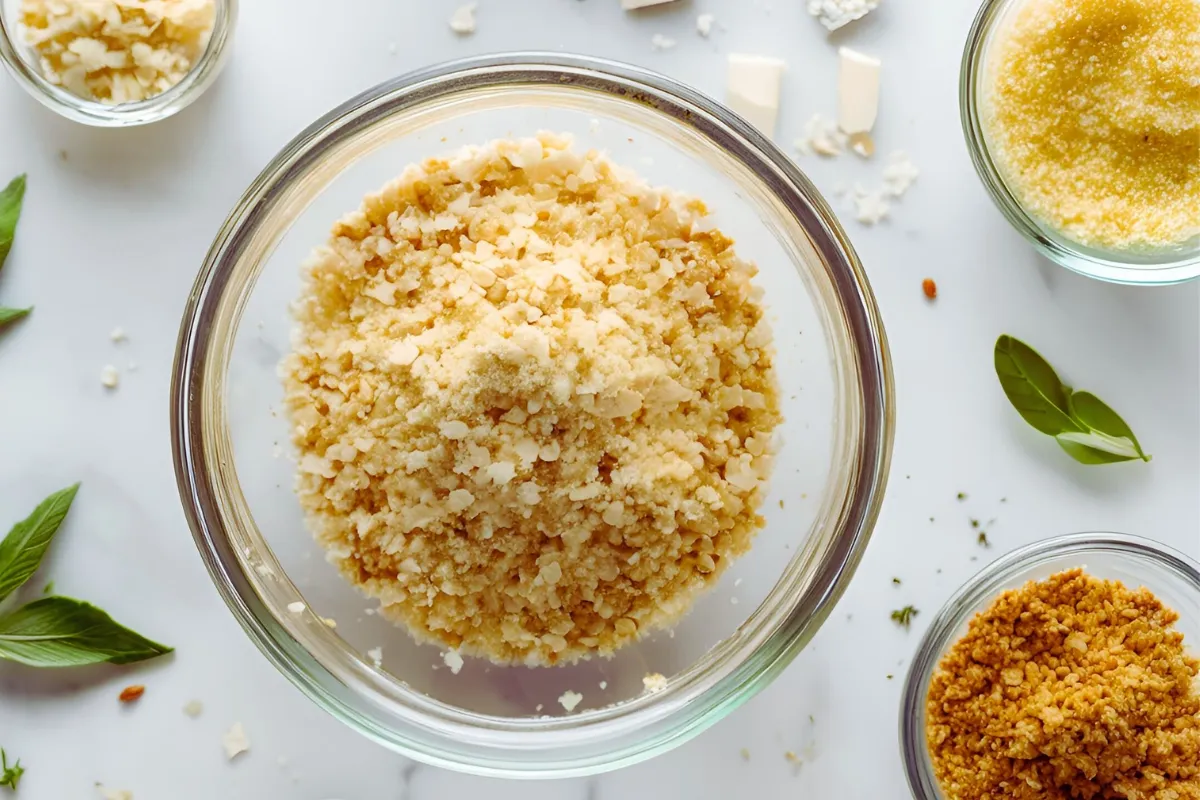Navigating the world of gluten-free alternatives can feel like an adventure—especially when you’re trying to recreate those classic, breaded dishes without sacrificing flavor or texture. Whether you’re someone with dietary restrictions or just looking to experiment in the kitchen, gluten-free bread crumbs are here to change the game. In this guide, we’ll dive deep into why these little crumbs matter, who should consider them, and how they differ from traditional options.
Why Are Gluten-Free Bread Crumbs Important for Recipes?
Growing Demand for Gluten-Free Breadcrumbs in Cooking
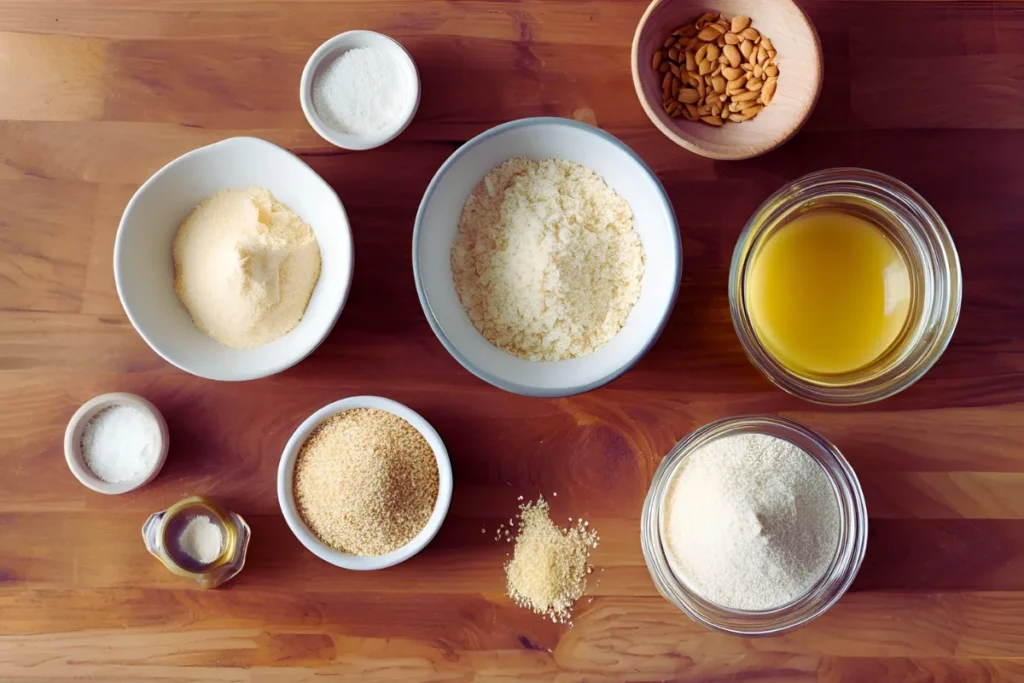
In the last decade, gluten-free options have gone from niche to mainstream. Grocery aisles now boast an impressive array of gluten-free products, from pasta to pizza crusts, and, of course, bread crumbs. But what’s behind this surge in demand? A big part of it stems from the rising awareness of gluten sensitivities and celiac disease.
Celiac disease affects about 1% of the population, but many others experience non-celiac gluten sensitivity. These folks aren’t just hopping on a trendy diet—gluten consumption can lead to everything from digestive issues to joint pain. Because of this, more people are seeking gluten-free ingredients to recreate recipes without the adverse effects.
Moreover, gluten-free eating isn’t just for health concerns anymore. It’s also become a lifestyle choice for those who believe gluten-free options feel lighter or easier on their digestive system. As a result, Crumbs for gluten-free recipes are becoming a pantry staple in homes around the world.
As more people seek gluten-free ingredients, you’ll find that gluten-free options are becoming pantry staples in many households. If you’re looking for more gluten-free meal ideas, check out Crockpot Chicken Recipes, which includes easy and flavorful gluten-free options.
Health Benefits of a Gluten-Free Diet
So, what are the perks of ditching gluten? For individuals with celiac disease, eliminating gluten isn’t just beneficial—it’s essential. When these individuals consume gluten, their immune system attacks the small intestine, which can lead to serious complications. However, even for those without celiac disease, a gluten-free diet can lead to some unexpected benefits.
For one, many people report feeling less bloated and more energetic after cutting out gluten. Additionally, gluten-free diets often involve consuming less processed food, which means more fresh, whole ingredients on the plate. And Crumbs for gluten-free recipes? They’re often made with healthier, nutrient-rich flours like almond or coconut, giving them a nutritional edge.
Who Should Consider Crumbs for gluten-free recipes?
Individuals with Celiac Disease or Gluten Sensitivity
For those with celiac disease, consuming gluten is a non-negotiable no-go. Even a small amount can wreak havoc on their system. Similarly, individuals with non-celiac gluten sensitivity (NCGS) can experience symptoms like headaches, fatigue, and digestive discomfort when they consume gluten-containing foods.
For this group, Crumbs for gluten-free recipes are a lifesaver—allowing them to enjoy dishes like meatballs, casseroles, or breaded chicken without any risks. Plus, they open the door to countless recipes that otherwise might’ve been off-limits.
Those Seeking Healthier Alternatives in Recipes
Even if you don’t have a gluten-related condition, swapping out regular bread crumbs for their gluten-free counterparts might be worth considering. Why? Many Crumbs for gluten-free recipes use alternative flours like rice, almond, or chickpea flour, which often have lower carbs or higher protein content compared to traditional breadcrumbs.
For health-conscious eaters or those cutting down on processed grains, gluten-free options can be a great addition to the pantry. They also tend to be free from common allergens like soy or dairy, making them a safe bet for families dealing with multiple dietary restrictions.
What Are Crumbs for gluten-free recipes?
Key Ingredients in Gluten-Free Bread Crumbs
Now, let’s break down what actually goes into these magical little crumbs. Unlike traditional breadcrumbs made from wheat-based bread, gluten-free bread crumbs are crafted from alternative flours or grains. Some of the most popular ingredients include:
- Rice flour: A versatile, neutral base.
- Almond flour: Adds a nutty flavor and extra protein.
- Coconut flour: Brings a hint of sweetness and fiber.
- Chickpea flour: Provides a heartier texture and slight nuttiness.
These ingredients not only make gluten-free bread crumbs safe for those avoiding gluten but also provide different textures and flavors that elevate the final dish.
Differences Between Regular and Gluten-Free Bread Crumbs
At first glance, regular and gluten-free bread crumbs might look identical. But when you dive deeper, the differences become pretty clear.
- Texture: Gluten-free bread crumbs tend to be a bit coarser or grainier than traditional ones, which can make them perfect for creating that golden, crispy crust.
- Flavor: Depending on the base ingredient, gluten-free bread crumbs may have a nuttier or sweeter taste compared to the mild flavor of wheat crumbs.
- Binding Ability: Without gluten, some gluten-free bread crumbs might not hold together as seamlessly in recipes like meatballs. However, this can often be fixed with the right technique or additional binding agents like eggs.
Despite these differences, gluten-free bread crumbs are incredibly versatile and can be used in nearly any recipe that calls for the traditional kind.
Understanding Gluten-Free Substitutes for Bread Crumbs
When it comes to making gluten-free recipes work, understanding substitutes for traditional bread crumbs is key. While regular bread crumbs rely on the elasticity of gluten to bind or crisp up, gluten-free substitutes bring their own unique characteristics to the table. Here’s a closer look at the most popular options, along with their pros and cons.
Common Gluten-Free Substitutes
Almond Meal and Coconut Flour
Almond meal and coconut flour are two of the most popular alternatives, and for good reason. Almond meal, made from finely ground almonds, has a slightly nutty taste that works beautifully in savory dishes. Coconut flour, on the other hand, has a light sweetness and a high fiber content that can add depth to recipes.
- Pros: Almond meal is high in protein and healthy fats, while coconut flour is low-carb and gluten-free. Both create a nice texture for breading and coating.
- Cons: They don’t absorb liquid the same way as traditional bread crumbs, which can sometimes lead to soggy results if not balanced correctly.
Crushed Gluten-Free Crackers
Here’s a hack you might already have in your pantry! Gluten-free crackers can be crushed and used as a one-to-one substitute for bread crumbs. They’re especially handy for recipes like casseroles or baked dishes that need a crispy topping.
- Pros: They’re convenient, customizable, and already seasoned in many cases.
- Cons: Depending on the brand, they can be pricier than other substitutes, and their salt content may require recipe adjustments.
Pros and Cons of Gluten-Free Alternatives
So, are gluten-free bread crumb substitutes a perfect swap for the original? Yes and no. While they have their advantages—like added nutrients or unique flavors—they also have limitations.
Advantages:
- Many substitutes are more nutrient-dense than traditional bread crumbs, offering benefits like higher protein or fiber.
- Gluten-free substitutes are usually versatile and can be used in multiple ways, from coatings to binding agents.
Disadvantages:
- Texture can sometimes be tricky. For example, almond meal might not provide the same crunch as panko-style bread crumbs.
- Cost is another factor. Gluten-free substitutes often come with a higher price tag than their wheat-based counterparts.
Is Panko Usually Gluten-Free?
Panko is a staple in many kitchens, prized for its light, airy texture and incredible crispness. But is it gluten-free? Unfortunately, traditional panko bread crumbs are made from wheat bread, which makes them off-limits for anyone avoiding gluten.
Traditional Panko vs. Gluten-Free Panko
The good news is that gluten-free panko alternatives have hit the market, and they’re surprisingly good. Traditional panko relies on its unique production method—crustless white bread that’s baked, dried, and turned into large, flaky crumbs. Gluten-free panko mimics this process but swaps in alternative flours like rice flour or cornstarch.
- Traditional Panko: Contains gluten, made from white bread.
- Gluten-Free Panko: Made from flours like rice, with a texture that’s just as crisp and light.
Popular Gluten-Free Recipes with Bread Crumbs
Several brands have stepped up their game with excellent gluten-free panko options. Here are some popular choices:
- Kikkoman Gluten-Free Panko: Made with rice flour, this option is widely loved for its crisp texture.
- Ian’s Gluten-Free Panko Bread Crumbs: This brand offers a slightly coarser crumb, perfect for breading chicken or fish.
- ALEIA’s Gluten-Free Panko: Known for its mild flavor, ALEIA’s panko is a great all-purpose option.
Are Kellogg’s Corn Flake Bread Crumbs Gluten-Free?
Corn flakes might seem like a safe gluten-free option, but the story gets a little complicated when you look closer.
Analyzing Ingredients in Kellogg’s Corn Flakes
Traditional Kellogg’s Corn Flakes are made with corn, which is naturally gluten-free. However, the product also includes malt flavoring—a derivative of barley—which contains gluten. Because of this, Kellogg’s Corn Flakes cannot be considered safe for a gluten-free diet.
Certified Gluten-Free Corn Flake Options
Thankfully, there are several certified gluten-free corn flake brands on the market that work beautifully as a substitute for bread crumbs. These products are made without barley-based malt and are often labeled “gluten-free” for easy identification. Popular brands include:
- Nature’s Path Organic Corn Flakes: Certified gluten-free and made with organic ingredients.
- Barbara’s Bakery Puffins Corn Flakes: Another great option, these flakes are light and crispy, perfect for coating.
How Do Gluten-Free Bread Crumbs Compare in Taste?
One of the biggest questions people have about gluten-free bread crumbs is whether they taste different from the original. The answer? It depends!
Texture and Flavor Profiles
Gluten-free bread crumbs often come in a variety of textures, from fine and powdery to coarse and crunchy. The choice of base ingredient heavily influences the flavor: almond meal adds nuttiness, coconut flour brings a hint of sweetness, and rice flour keeps things neutral.
When used in recipes, gluten-free bread crumbs often shine in their own way. For instance, the natural sweetness of coconut flour can elevate the flavor of baked goods, while the crunch of rice flour-based crumbs works wonders for fried dishes.
Cooking and Baking Performance
In terms of performance, gluten-free bread crumbs might require a little experimentation. Because they don’t have the binding power of gluten, recipes like meatballs or burgers may need an extra egg or some additional moisture to hold together. However, for breading and frying, gluten-free crumbs perform remarkably well—creating that sought-after golden crust.
Using Gluten-Free Bread Crumbs in Everyday Cooking
Gluten-free bread crumbs aren’t just a specialty item anymore—they’re a versatile ingredient that can enhance countless recipes. Whether you’re breading chicken, adding texture to casseroles, or binding meatballs, these crumbs can do it all. Let’s dive into some practical tips, challenges, and delicious recipes to make the most of them in your kitchen.
Tips for Using Gluten-Free Bread Crumbs Effectively in Recipes
Techniques for Binding and Coating
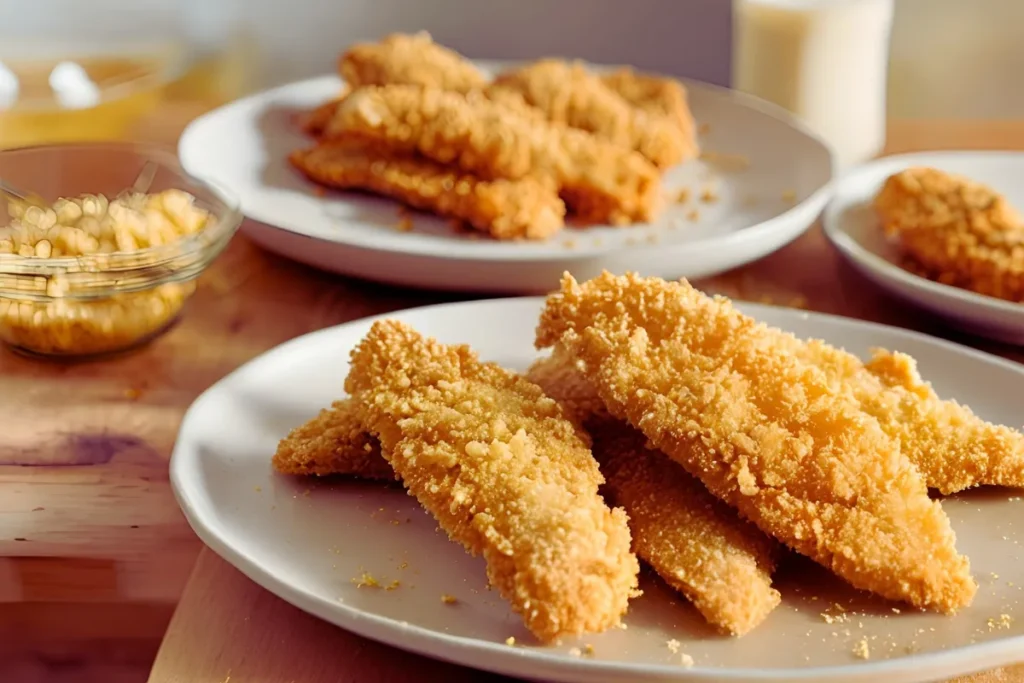
Using gluten-free bread crumbs effectively often requires a few tweaks to traditional methods. Without gluten, the binding power of these crumbs may be slightly reduced, so adjusting your recipe can make all the difference.
- For Binding: If you’re making something like meatballs or veggie patties, adding an extra egg or a tablespoon of a gluten-free flour (such as rice flour or almond flour) can help everything hold together.
- For Coating: To get that perfect crispy crust, use the classic three-step breading process: dredge in gluten-free flour, dip in beaten egg, and then coat with gluten-free bread crumbs. A light press helps the crumbs stick better!
Additionally, don’t be afraid to get creative. You can mix gluten-free bread crumbs with Parmesan cheese, dried herbs, or spices to add even more flavor to your coatings.
Best Recipes to Try with Gluten-Free Bread Crumbs
Not sure where to start? Gluten-free bread crumbs are incredibly versatile and can be swapped into almost any recipe that calls for the regular kind. Here are a few crowd-pleasers:
- Breaded Chicken Tenders: The perfect crispy, golden coating makes these a hit for kids and adults alike.
- Stuffed Mushrooms: Combine gluten-free bread crumbs with garlic, herbs, and cheese for a savory filling.
- Meatloaf: Add moisture and structure with gluten-free bread crumbs for a tender, flavorful dish.
Challenges and Solutions for Gluten-Free Cooking
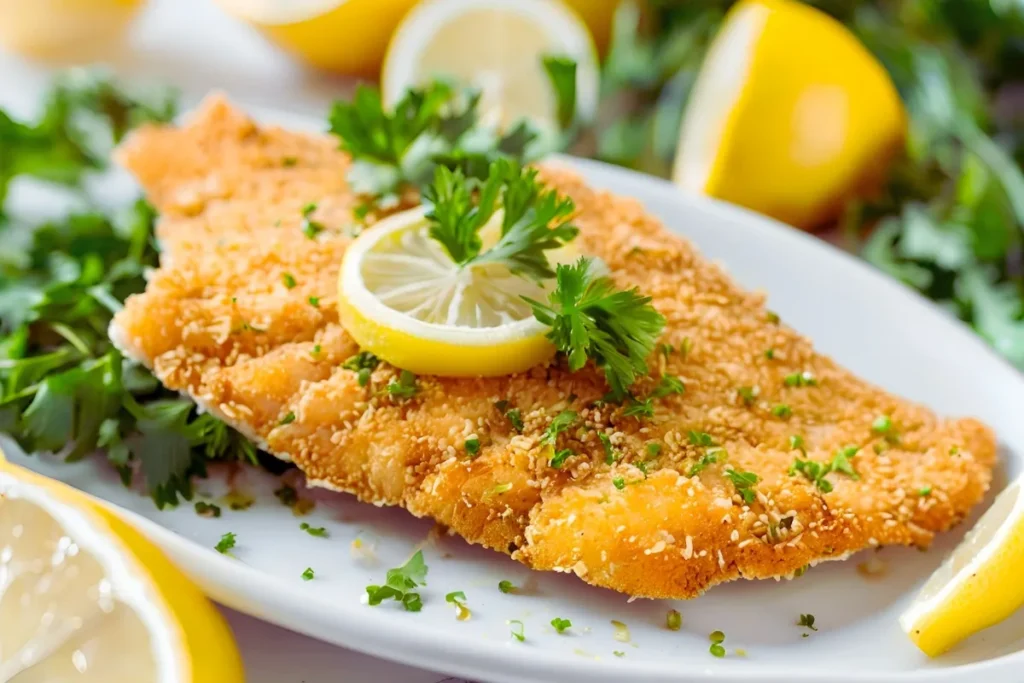
Cooking without gluten can sometimes feel like a balancing act, especially when it comes to achieving the right texture and flavor. Here are some common challenges and how to solve them:
Preventing Crumbling or Dryness in Recipes
One of the most common issues with gluten-free bread crumbs is their tendency to crumble or dry out in certain recipes. This happens because gluten-free ingredients don’t absorb moisture in the same way as wheat-based products.
Solution: To combat dryness, increase the moisture in your recipe. For example, add a splash of milk, a dollop of yogurt, or an extra egg to meatball mixtures. For coatings, consider lightly spraying or brushing your breaded items with oil before baking to keep them from drying out.
Balancing Flavor with Gluten-Free Ingredients
Some gluten-free bread crumbs have unique flavors due to their base ingredients (like almond or coconut flour). While this can add depth, it might not always work for every recipe.
Solution: If the flavor of your crumbs feels too strong, balance it out by mixing them with neutral ingredients like gluten-free rice flour or plain breadcrumbs. You can also amplify seasonings like garlic powder, paprika, or herbs to complement the taste.
Popular Recipes Using Gluten-free panko
Gluten-free panko open up a world of recipe possibilities. Here are some standout dishes to inspire your next meal:
Gluten-Free Meatballs and Burgers
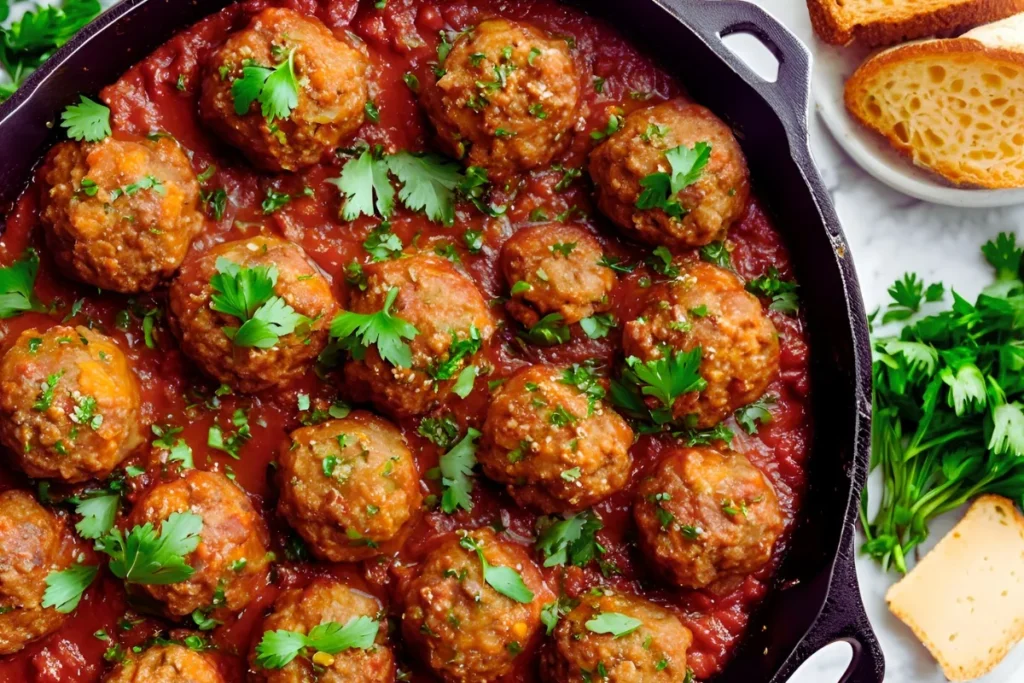
Meatballs and burgers are classic comfort foods that are easy to make gluten-free with the right bread crumbs. Here’s a simple recipe to try:
Gluten-Free Meatballs
Ingredients:
- 1 lb ground beef (or turkey)
- ½ cup Gluten-free panko
- 1 egg
- ¼ cup grated Parmesan cheese
- 2 garlic cloves, minced
- 1 tsp dried Italian seasoning
- Salt and pepper to taste
Instructions:
- Preheat your oven to 375°F.
- In a large bowl, combine all the ingredients and mix gently until well incorporated.
- Roll the mixture into small balls and place them on a greased baking sheet.
- Bake for 20 minutes, or until the meatballs are cooked through.
Servings: 4 | Calories per serving: ~280
Crispy Gluten-Free Chicken or Fish
For a crowd-pleasing dinner, try this easy gluten-free breading technique:
- Prepare Your Protein: Pat chicken tenders or fish fillets dry with a paper towel.
- Breading Station: Set up three shallow bowls—one with gluten-free flour, one with beaten eggs, and one with seasoned gluten-free bread crumbs.
- Coat and Cook: Dredge the protein in the flour, dip in egg, and coat with bread crumbs. Bake, fry, or air-fry until golden and crispy.
Gluten-Free Vegan Options
Who says gluten-free bread crumbs are just for meat dishes? They’re equally delicious in vegan recipes like eggplant Parmesan, zucchini fritters, or stuffed peppers. Simply swap out dairy or eggs for plant-based alternatives, and you’re good to go!
Future Trends in Gluten-Free Bread Crumbs
The gluten-free market continues to grow, and bread crumbs are no exception. Here’s what we can expect in the future:
Innovative Ingredients and Methods
Brands are constantly experimenting with new ingredients, such as cassava flour or chickpea-based crumbs. These innovations aim to improve texture and flavor, bringing gluten-free products even closer to their traditional counterparts.
Sustainability in Gluten-Free Products
As consumers become more eco-conscious, there’s a push for sustainable gluten-free ingredients. Look out for bread crumbs made with upcycled grains or packaging that reduces waste.
Final Thoughts on Gluten-free panko
The beauty of Gluten-free panko lies in their versatility and ability to bring beloved dishes back to the table for people with gluten restrictions. Whether you’re trying them out of necessity or curiosity, they’re a simple, delicious way to add crunch, flavor, and creativity to your meals.
Before making drastic dietary changes, it’s always a good idea to consult with a healthcare professional. For more information on the benefits of a gluten-free diet and potential health considerations, you can visit Healthline.
FAQs
1. What is a gluten-free substitute for bread crumbs?
There are plenty of options to replace traditional bread crumbs when following a gluten-free diet. Almond meal, coconut flour, and crushed gluten-free crackers are some of the most popular choices. Additionally, pre-made gluten-free bread crumbs are widely available in stores. The key is to pick a substitute that complements the flavor and texture of your dish while meeting your dietary needs. For instance, almond meal works great for a nutty crust, while rice flour-based crumbs provide a neutral flavor.
2. How can I make homemade Gluten-free panko?
Making Gluten-free panko at home is incredibly simple and cost-effective. Start by using your favorite gluten-free bread—stale or lightly toasted bread works best. Tear it into small pieces and blend or pulse in a food processor until you reach your desired crumb consistency. For extra flavor, you can season the crumbs with garlic powder, Italian herbs, or even a touch of grated Parmesan. Store the crumbs in an airtight container to keep them fresh for future use.
3. Is panko usually gluten-free?
No, traditional panko bread crumbs are not gluten-free because they are made from wheat bread. However, there are excellent gluten-free panko alternatives available. These are typically made with rice flour or cornstarch, creating a similar light and crispy texture. When shopping for gluten-free panko, check the label for certified gluten-free markings and ensure there’s no risk of cross-contamination. Brands like Kikkoman and Ian’s offer trusted options for gluten-free diets.
4. Are Kellogg’s corn flake Gluten-free panko?
Kellogg’s Corn Flake crumbs are not gluten-free due to the presence of malt flavoring, which is derived from barley. However, there are certified gluten-free corn flake products from brands like Nature’s Path and Barbara’s Bakery. These can be crushed and used as a gluten-free alternative for Gluten-free panko, providing a crispy coating or topping for your dishes without the worry of gluten exposure.
5. Do Gluten-free breadcrumbs taste different from regular bread crumbs?
The taste of Gluten-free breadcrumbs can vary depending on the ingredients used. Almond or coconut flour-based crumbs often have a nuttier or slightly sweeter flavor, while rice-based crumbs are more neutral. When used in recipes, Gluten-free breadcrumbs generally blend well with other ingredients, but their texture might be a bit coarser. Adding seasonings or mixing them with Parmesan cheese can help balance any flavor differences and elevate your dish.
6. What are the best recipes to try with Gluten-free breadcrumbs?
Gluten-free breadcrumbs are perfect for a variety of recipes. Some popular dishes include crispy chicken tenders, gluten-free meatballs, and baked casseroles with a crunchy topping. For vegetarians and vegans, they’re excellent in stuffed mushrooms or zucchini fritters. These crumbs can also be used in creative ways, like adding texture to soups or sprinkling over salads for extra crunch.
7. How do I prevent Gluten-free breadcrumbs from drying out my recipes?
Because Gluten-free breadcrumbs absorb moisture differently than traditional ones, recipes can sometimes turn out dry. To avoid this, you can add extra moisture to your recipe by including an extra egg, a splash of milk, or a bit of olive oil. Additionally, when baking breaded dishes, lightly spraying the surface with oil or butter helps lock in moisture and create a golden, crispy crust.
Part 4 is complete. Would you like me to proceed to SEO Metadata?

